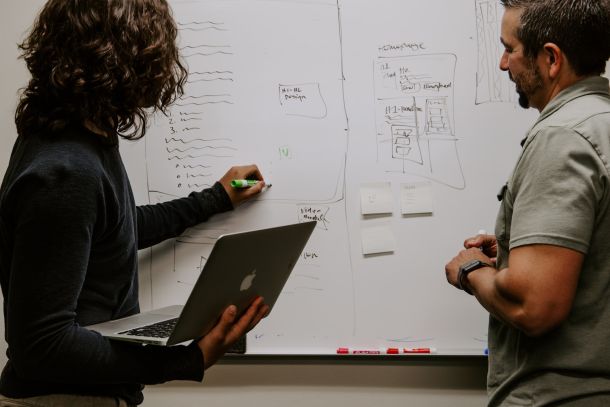Customer Story: New generation system of data aquisition from meters and concentrators for innogy Stoen Operator HES
BACKGROUND
HES-NG (Head End System-New generation) is one of the first solutions on the market that responds to the need for data acquisition in accordance with the needs of the distribution system operator. The proprietary system dedicated to the power market is a solution that enables two-way communication with metering infrastructure devices for the purpose of collecting measurement data in real-time and controlling the parameters of metering infrastructure devices. Communication within the system is based on a dedicated communication protocol for a given type of device.
Having such a modern scalable platform allows us to become independent of meter vendors. Another advantage is the flexible approach to dedicated platforms that manage meters, as well as providing two-way transmission, allowing remote reading of meter states and tariff switching in remote mode. This solution provides a significant advantage in the fight for customers in an increasingly competitive energy market. The HES-NG solution we have implemented allows us to significantly reduce operating costs on the one hand and meet customer needs in real-time on the other.
HES-NG enables us to meet the requirements of the Act of December 8, 2017, on the power market and its amendment of May 20, 2021.
OPPORTUNITY / CHALLENGE
The obligation to install remote reading meters.
At least 15% of energy consumption points by the end of 2023 require the installation of remote reading meters.
By the end of 2028, such meters will be installed for at least 80% of end-users, including at least 80% of households.
The amendment of the Act of December 8, 2017, on the power market, the so-called “Metering Act” of May 20, 2021, which implements power mechanisms into the Polish legal order, imposes a number of new obligations on distribution system operators (DSOs). In the case of innogy Stoen Operator, this includes the need to launch remote acquisition for over 10 thousand meters in tariff groups C1x, C2x, BXX, AXX, which require a change in the architecture of systems for remote reading of smart meters.
SOLUTION
The creators of the system focused on its versatility, resulting in an open platform for acquiring various types of data, applicable also in the case of other utilities than energy, such as gas or water. The system is free of technological limitations, making it scalable (both horizontally and vertically). It can be expanded with additional modules according to growing needs without closing off to solutions from providers. It enables, among others, the servicing of devices from multiple manufacturers, quick addition of new communication controllers, as well as a wide range of configuration parameters allowing for flexible system management and business process execution. This provides the possibility of quick response to regulatory and legal changes. The system has interfaces with all necessary systems for servicing measuring systems, including SAP ISU, IT4M, and CBO.

During the design and implementation of the solution, we focused on security issues in multiple dimensions – performance, stability, and of course, cybersecurity, as well as resistance to unforeseen situations. The solution uses network-level security mechanisms, IoT technology, and is based on proven cryptographic methods and communication standards. We should note here that we are dealing with various meter standards operating in the operator’s network. The level of security also depends on the device plugged into the network, which becomes part of the system. Regarding ensuring stability and performance, a strong point is the architectural solution based on microservices, which is resistant to failures of individual elements, connection problems, or faults of the measuring devices themselves. We can easily scale the solution to handle increased traffic or query frequency to devices.
An important element that will help tailor services to customer needs will be, among others, the analysis of energy consumption data. This will allow energy providers to propose a tariff tailored to the customer’s current needs. The system implemented jointly with innogy Stoen Operator provides just such an opportunity. The collected energy consumption data in real-time is sent to independent IT systems, created to provide services for a strictly defined area, which are further processed to achieve business goals, such as service billing or consumption planning.
How did you come to work with Execon?
„We undertake complex projects for various sectors, and what sets us apart is our individual approach to each client, depending on their needs, as well as our good knowledge of regulated sectors. Considering the challenges and constantly changing regulations, we see the necessity of looking at the client’s needs, taking into account their organization and the processes that take place within it.
Our clients value our phased approach to projects. Before starting the process of implementing changes in the area of digital transformation, we jointly determine the goal, define the needs, and establish a communication method. During the process, we analyze the operational model and then tailor the solution to meet the business needs and technological strategy of the company.
Considering our many years of experience and practice in many sectors, we are able to approach each project individually and also adapt the technology to the needs of the organization.
I believe that this is what allowed us to become part of the solution developed by innogy Stoen Operator. Thanks to this, we were able to implement a pioneering remote meter reading system for electricity meters of the HES-NG class,” said Artur Lempkowski, CEO of Execon.
What is the status of this engagement?
We plan to continue developing the system with new functionalities, integrating additional types of devices and systems in Stoen, redirecting the data acquisition load from the currently used solutions towards HES-NG, developing the Front-End layer of the system, improving the customer experience, and further optimizing and automating internal processes. Since the implementation of HES-NG, we have been providing system maintenance services.
RESULTS & FEEDBACK
What evidence can you share that demonstrates the impact of the engagement?
“ For the first time in history, we were able to create a highly efficient HES-NG class system from our internal resources. This not only allows us to meet the regulations concerning the power market, but also enables us to offer our solution to other entities dealing with the acquisition of measurement data and to use the system for the mass deployment of smart meters, thanks to its open and flexible architecture,” says Robert Grabowski, IT Solution Manager at innogy Stoen Operator.
How did Execon perform from a project management standpoint?
What did you find most impressive about them?
„The HES-NG system stands out for its extensive analytical capabilities. Its attributes also include the source code, which allows for self-modification and changes using internal IT resources. The system also allows for expansion with new integrations with innogy systems.
The biggest advantage of HES-NG from the customer’s point of view is its open and flexible architecture. This allows for customization and the addition of specific functionalities to meet current needs. The platform also offers an automated data acquisition process.
Another feature that distinguishes HES-NG from iSO is the unique combination of development and support services in one place, leading to reduced costs in business processes. In this case, there is also no licensing of the final product because open-source components were used to create the system.
“The creation of the modern and universal HES-NG system, which responds to business needs in the area of data acquisition and remote device configuration, opens a new chapter in the activities of innogy Stoen Operator and will undoubtedly contribute to building the company’s image as a leader in innovative, transparent, market-oriented solutions in the energy and gas market,” commented Jakub Tomczak, Director of the Metering Data and Meters Operator Department at innogy Stoen Operator.
“Scalability is a very important factor resulting from the distributed architecture based on microservices. The modern technology stack, which provides broad scalability options and the ability to meet additional requirements, not only statutory ones, is what is important. The solution is directed towards integration with not just one, but many meter manufacturers. Thanks to the open domain architecture, we have the ability to connect any meters from different suppliers and read data using the manufacturer’s protocol.
Additionally, it’s worth noting that the system is universal. The open platform allows for the acquisition of various types of data and the application of its functionalities in media other than energy, such as gas or water. The system allows for quick addition of new communication drivers, business process implementation, as well as efficient response to regulatory and legal changes,” says Artur Lempkowski, CEO of Execon.
Are there any areas they could improve?
The current version of the system does not use blockchain and artificial intelligence. It is likely that in the future, blockchain-based services will play an important role in the energy sector. However, at this stage, there was no such need.
Do you have any advice for potential customers?
We cordially invite you to contact us and cooperate, we are confident that we will meet your expectations in the field of data acquisition systems from meters and concentrators…and more.





















